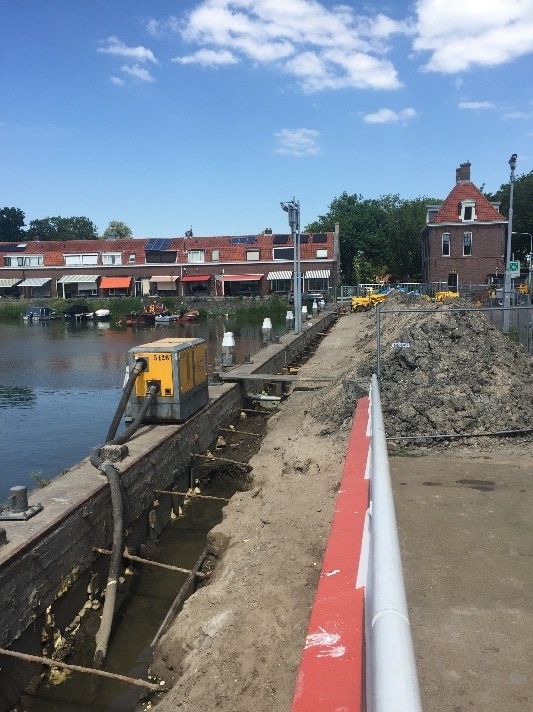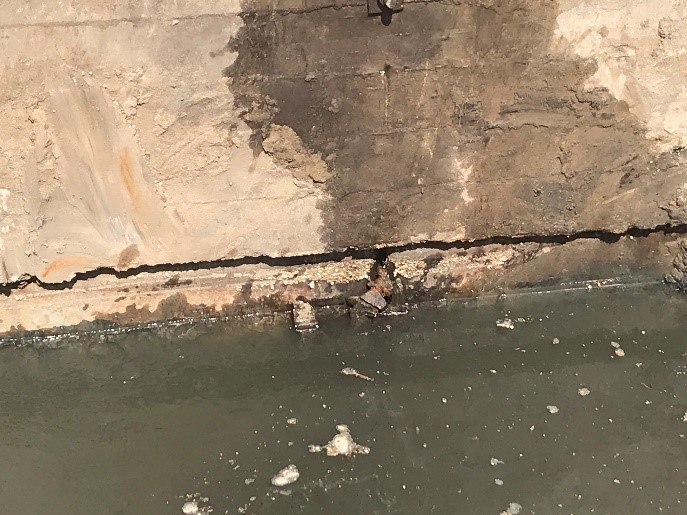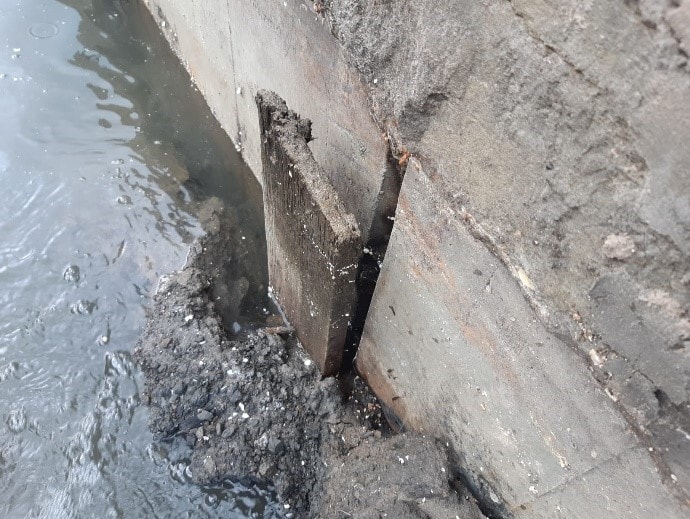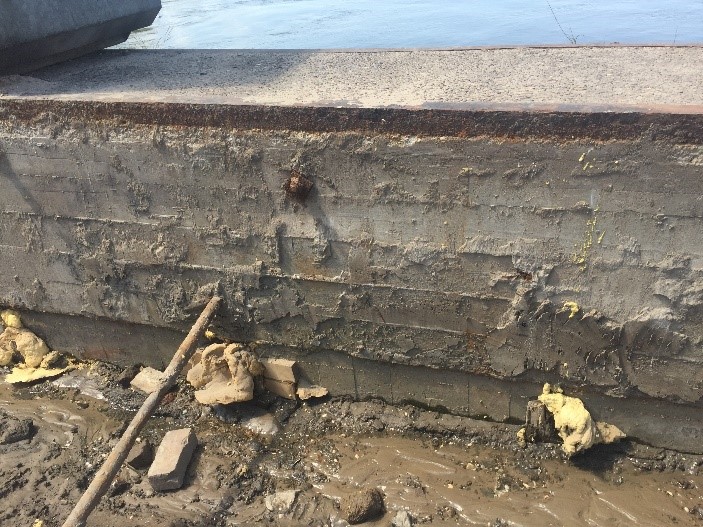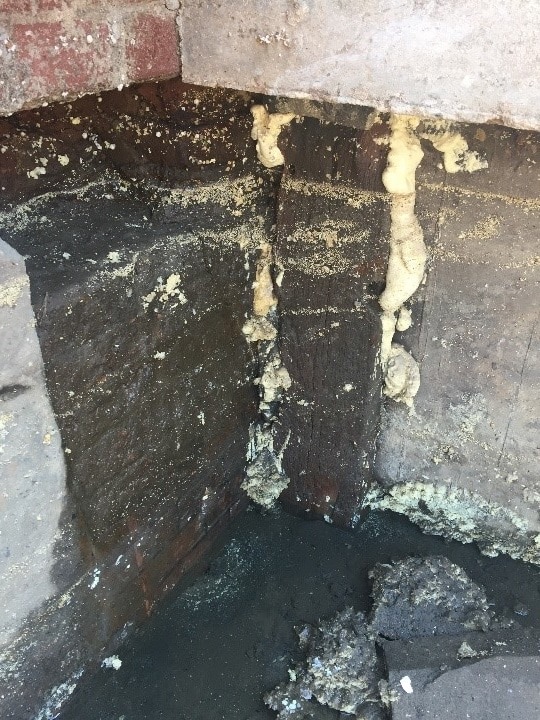Amsterdam is inextricably linked to water. Consider its canals and waterways. The Amstel and the IJ rivers are its lifelines. The many bridges and quay walls connecting them link the districts and neighborhoods, giving Amsterdam its unique character. Tens of kilometers of quay walls are at the end of their lifespan and in poor condition. Urgent action is required to keep the city safe, accessible, and livable. (source: www.amsterdam.nl)
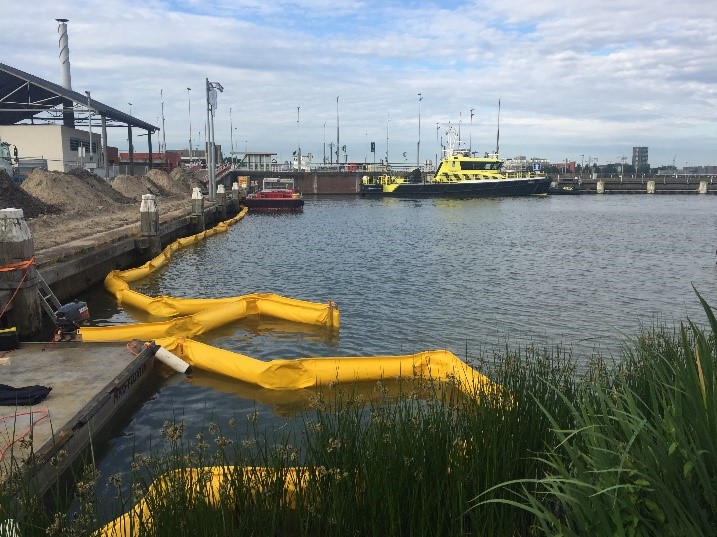
Injection work on the quay wall of the Noorder IJdijk in Amsterdam (Schellingwoude)
Commissioned by Van Doorn Buitenruimte, SealteQ Noord injected the quay wall at Noorder IJdijk. This injection prevented unwanted penetration of (ground)water.
The Problem Statement
The quay wall at Noorder IJdijk has a length of approximately 65 m1, featuring 67 joints; these are fish-mouth connections of concrete sheet pile elements (approximately 7m1 deep). These joints are insufficiently sealed, and the capping beams are also affected, causing them to no longer connect properly. This issue leads to sediment flowing out from behind the sheet piling, resulting in holes appearing in the paving. Consequently, sand and soil are washed away.
As a solution to this problem, it was decided to inject the sheet pile elements with PUR injection resin. This method of injection will prevent any further subsidence.
The Work
To thoroughly map the quay wall, a diving team was also deployed during the investigation phase. The diver was present throughout the execution to monitor the progress and results of the injection work. The project commenced with operations on the inner side of the quay wall using (somewhat flexible) coupled lances. The injection lance was inserted to depth with flushing water through the opening between the deck planks and the underlying quay wall. The diver played a crucial role in confirming the correct positioning. A few days later, 60% of the quay wall had been injected, allowing further sealing work to commence. To achieve the maximum feasible result, the open joints on the exterior were sealed using various aids (from the bottom to the underside of the capping beam). This was also carried out on the interior side as far as possible. Around the curve in the sheet piling, the leakage proved persistent. This section of the wall was injected with a modified injection additive, an extremely suitable agent for sealing extreme leaks. Injection work was also performed on the exterior of the quay, necessitated by the extreme water flow. The results of these efforts became apparent almost immediately as the water level behind the sheet piling dropped. Through this technique, the wall became approximately 90% watertight. In the following days, the quay wall was meticulously inspected, and where necessary, post-injected on both the interior and exterior sides to achieve a satisfactory final result.
Injection for (Ground)Water Leaks
As one of the pioneers in the development of watertight injection, SealteQ has specialized for years in preventing unwanted penetration of (ground)water in civil engineering. Throughout our history, we have continuously developed this technique in-house and have remedied countless projects affected by (ground)water leakage. These include, but are not limited to, parking garages, viaducts, embankments, sunken road sections, highways, and (parking) basements.
Specialties
Related markets
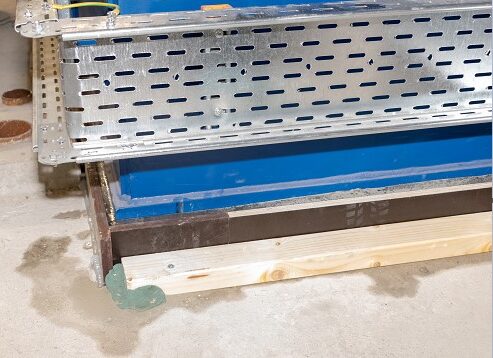
View the next project
Anchoring and under-casting a steam turbine and condenser
A new power plant is being built in Amsterdam. With its construction, AEB Amsterdam can supply twice the amount of sustainable heat to Amsterdam's heating network. The technology used to extract heat avoids approximately 67,000 tons of CO2 emissions per year (source: AEB Amsterdam).


